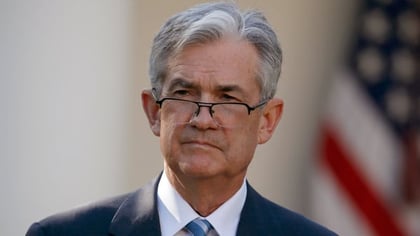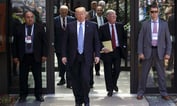The Federal Reserve meets Tuesday and Wednesday in Washington and the gathering will be followed by fresh economic projections and a press conference with Chairman Powell. While the news will likely be an expected interest-rate increase, the Fed has plenty of topics to dissect — from a falling unemployment rate to emerging-market pain.
Powell and his colleagues could shed light on these five longer-run policy themes.
1. Hot in here?
The labor market is running hot, so a job market discussion is sure to be on the Fed’s agenda. The committee’s 2018 unemployment projection is probably destined for a revision, since it places joblessness at 3.8 percent by the end of the year and the data hit that level in May. But more interesting is whether officials will cut their longer-run unemployment estimate — now at 4.5 percent — and how they explain any change.
The Fed says unemployment is already running below the level that can be sustained in the longer run, but wages are crawling higher rather than taking off. What’s more, job growth hasn’t slowed down as much as you might expect in an economy with a big worker shortage.
Those developments could push the Fed to revise down that longer-run jobless rate, signaling the labor market is not as hot as expected with unemployment this low. More people working means the economy has more capacity to grow, and a change in the longer-run estimate could be a sign that the Fed thinks unemployment can sustain lower readings without sending inflation too high.
On the other hand, if the longer-run jobless estimate doesn’t come down, that would signal that the Fed sees an economy well on its way toward overheating. Translation: either more rate hikes or higher inflation could be in train.
2. Knocking on neutral?
Any details on the coming shift from easy to tight monetary policy will definitely draw attention.
Officials in March expected to cross that threshold in 2020, when their median estimate saw rates reaching 3.4 percent. That lies two quarter-point hikes above the 2.9 percent they estimate as the longer-run neutral level — the one that will neither support nor slow growth. Powell acknowledged back in March that such a policy path would be modestly restrictive, but added that out-year estimates are “highly uncertain.”
Fed officials remain split. Governor Lael Brainard said in a May 31 speech that “it seems likely that the neutral rate could rise in the medium term above its longer-run value.” In short, the Fed could boost rates above long-run neutral without intentionally curbing growth. John Williams, the San Francisco Fed president, has made it clear that he’s OK with moving into actually tight territory. On the other side of the debate, presidents Robert Kaplan, Raphael Bostic and Patrick Harker have urged caution.
“If more Fed officials begin to bring on board the idea of a pause at neutral — which is far from generally supported,” then “there might be some risk that the 2019 or 2020 dots actually drift lower,” TD Securities analysts wrote in their Fed preview.
3. Any guidance?









 June 12, 2018 at 03:32 PM
June 12, 2018 at 03:32 PM











